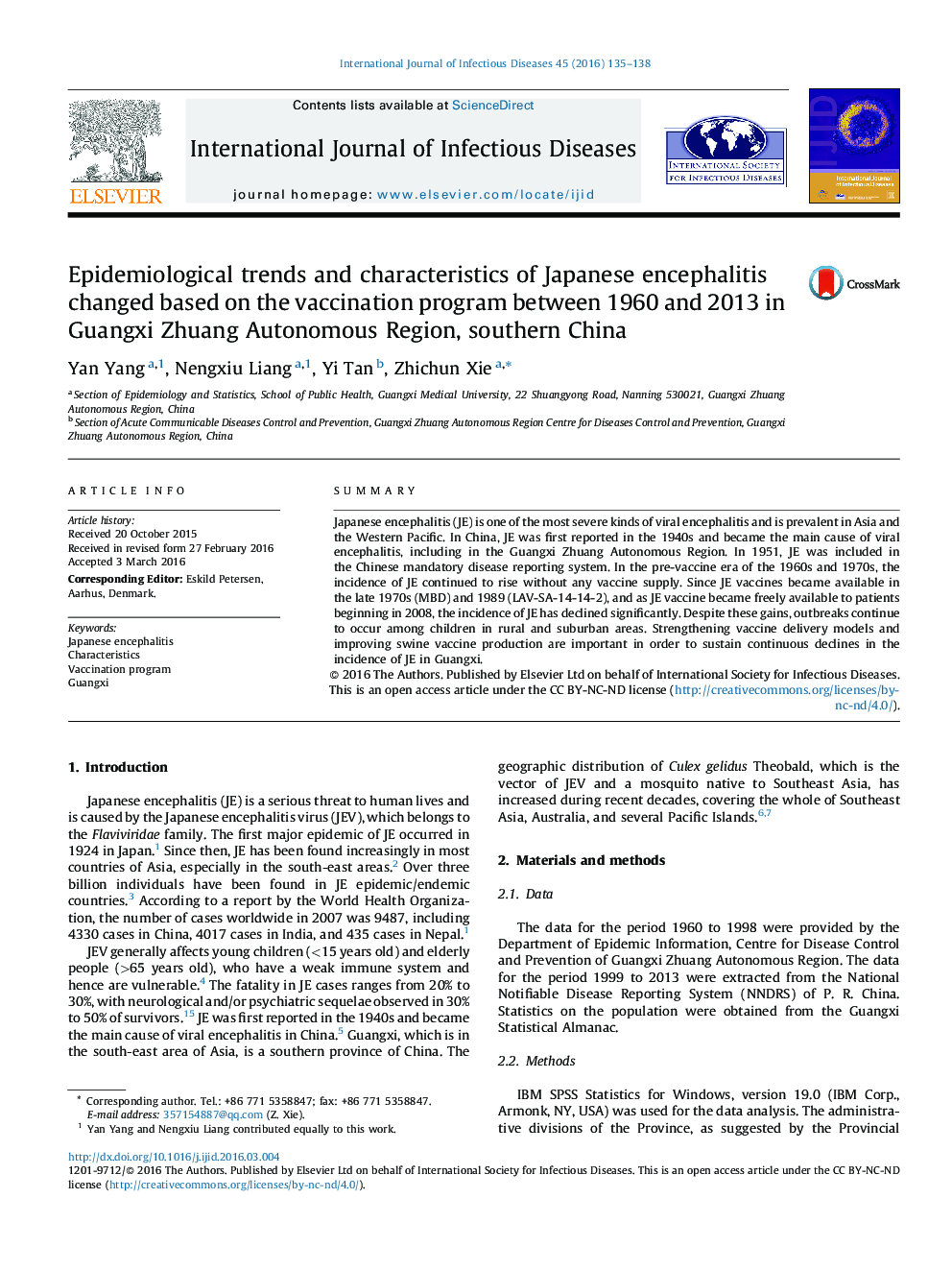| کد مقاله | کد نشریه | سال انتشار | مقاله انگلیسی | نسخه تمام متن |
|---|---|---|---|---|
| 3361760 | 1592049 | 2016 | 4 صفحه PDF | دانلود رایگان |
• In Guangxi, the incidence of Japanese encephalitis (JE) has decreased since the 1980s with the promotion of the JE vaccine.
• During the years 1960–2013, 95.83% of JE cases were reported in the months of May to September, when mosquitoes are most active.
• Housebound preschool children are the main JE population.
SummaryJapanese encephalitis (JE) is one of the most severe kinds of viral encephalitis and is prevalent in Asia and the Western Pacific. In China, JE was first reported in the 1940s and became the main cause of viral encephalitis, including in the Guangxi Zhuang Autonomous Region. In 1951, JE was included in the Chinese mandatory disease reporting system. In the pre-vaccine era of the 1960s and 1970s, the incidence of JE continued to rise without any vaccine supply. Since JE vaccines became available in the late 1970s (MBD) and 1989 (LAV-SA-14-14-2), and as JE vaccine became freely available to patients beginning in 2008, the incidence of JE has declined significantly. Despite these gains, outbreaks continue to occur among children in rural and suburban areas. Strengthening vaccine delivery models and improving swine vaccine production are important in order to sustain continuous declines in the incidence of JE in Guangxi.
Journal: International Journal of Infectious Diseases - Volume 45, April 2016, Pages 135–138
